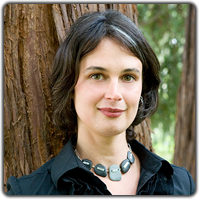 On Dec. 10, 1997, 23-year Julia “Butterfly” Hill climbed into a 180-foot California Coast redwood tree. Her goal was to live in the tree for as long as it took to prevent its destruction and the destruction of the forest where it had lived for more than 1,000 years. During the two years she spent in “Luna” (as she affectionately named the tree), she attracted worldwide attention for her use of nonviolent action in defense of the forest she cared so deeply about. Julia went up the tree an unknown campaigner and came down an international symbol. Her actions, both during her time in the tree and in the years since, are an attempt to heal the rift between humans and the natural environment. TILE had a conversation with her, almost ten years after she descended from her perch in the redwood forest.
On Dec. 10, 1997, 23-year Julia “Butterfly” Hill climbed into a 180-foot California Coast redwood tree. Her goal was to live in the tree for as long as it took to prevent its destruction and the destruction of the forest where it had lived for more than 1,000 years. During the two years she spent in “Luna” (as she affectionately named the tree), she attracted worldwide attention for her use of nonviolent action in defense of the forest she cared so deeply about. Julia went up the tree an unknown campaigner and came down an international symbol. Her actions, both during her time in the tree and in the years since, are an attempt to heal the rift between humans and the natural environment. TILE had a conversation with her, almost ten years after she descended from her perch in the redwood forest.
TILE: You’ve dedicated your life to protecting the planet; was there a defining moment that set you on this path?
Julia: Growing up, I was taught to appreciate and respect the Natural World. Nature was my playground and the place I went to for safety. I grew up poor and experienced a lot of violence, and Nature is where i went to get away as well as to play. As my family travelled quite a bit, we were often in cities. But even if all I could find was one tree, I would go to it. The first time I saw an ad for Greenpeace in a magazine, I was about 13 years old. I tore it out and hung it on my wall. It was a picture of the little raft boat trying to stop a seal-slaughter ship and getting hit with huge hoses of water. I thought that was the most amazing thing I had ever seen. Then, in my Junior year of high school, I got involved in helping launch the first environmental club on our campus called S.A.F.E. (Student Activists For Earth.) We started a recycling program on campus and a tree-planting program and rode our bikes and walked during the homecoming parade instead of driving around in cars. We were the crazy artist radicals in that extremely conservative school and in town.
I would have to say, though, that the truly defining moment was when I entered the Ancient Redwoods of California while travelling with friends in 1997. And then I walked into my first clear-cut and was absolutely horrified at the blatant destruction. It literally looked like a bomb had been set off in the middle of the forest. Then, when I found out that 97% of the original Redwoods had already been destroyed and that they were still continuing to use extremely toxic and destructive logging practices, something in my gut told me I had to act!
I call these moments the “choiceless choice.” We see an injustice or a need in the world, and we could choose to be silent and walk away, and yet something deep inside us is so compelling that we can’t do that. We have to say, “Yes” to that calling no matter how overwhelming or dangerous it might at first seem.
TILE: What, in your opinion, is the most important thing young people concerned with Climate Change can do today?
Julia: There are so many things we all can do to affect climate change:
We can choose to become vegan (not eat animals for food.) The farming of animals for food contributes to over half of all Climate Change emissions according to scientists and studies and the World Watch Institute. If someone is not ready to go vegan, going vegetarian is a good first step and also, even just beginning with reducing the amount of meat that someone eats makes a difference.
We can walk, ride bikes, and take public transportation as much as possible. I haven’t owned a car since I was 18 which was almost 18 years ago.
We can ask our parents to get involved, lobby their representatives in government. We can write letters to the editors of papers talking about our concerns as young people about this issue. We can get our schools and homes to adopt energy-saving tools and practices like energy-efficient light bulbs, turning down thermostats in the winter (even a couple degrees can make a huge difference in energy reduction), and using recycled paper (deforestation is a huge contributor to global warming.)
TILE: You came down from Luna almost ten years ago and have worked tirelessly on behalf of many worthy causes and organizations. What are you most passionate about that you’re working on now?
Julia: I love that I get to use my life to contribute to the good work of individuals and organizations all over the world. Some of the ongoing projects that I support are Women’s Earth Alliance (womensearthalliance.org), South Central Farmers (southcentralfarmers.org), The Engage Network (engagenet.org), and What’s Your Tree (whatsyourtree.org).
TILE: What are concrete ways young people can make sound environmental choices with their consumer dollars?
Julia: Shop at thrift stores!! We have to make it COOL TO CARE! Using things/resources that have already been used is a fantastic way to reduce carbon emissions because the manufacturing process of goods is another big contributor to climate change. Plus, shopping at thrift stores means we are shopping local which is also important. Almost all of my clothes come from thrift stores.
When we shop at a large corporate chain, on average, only approximately 3 – 8 cents on every dollar stays in our community. The rest leaves and goes to CEOs, Corporate managers, Headquarter buildings, etc… When we shop locally, approximately 55 – 90 cents per dollar on average stays in our community. That’s a BIG difference!
If we have farmer’s markets, it is best to buy as much of our food there as possible. If we don’t have farmer’s markets where we live, we need to get involved in working to get them started. Also, if we have yards, we can start gardens and grow some of our own food.
If we are buying new things, it is best to buy organic, local, energy-efficient, and recycled. The more we invest in these things with our dollars, the more we invest in a healthy and beautiful future for us all!
>> TILE brings you exclusive opinions, explanations, and interviews from experts in every industry. To read more, click on Ask the Experts in the TILE Library.
Have a burning question or an expert you’d like to see interviewed? Just Ask TILE!
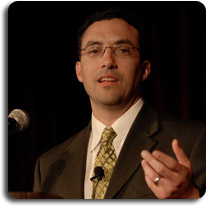 Jonah Edelman is the Chief Executive Officer of Stand for Children. His job is to work with the experts to identify the best opportunities to create better lives for children, and then guide organizations and volunteers in taking advantage of those opportunities. Stand for Children was chosen as a TILE charity because we believe in the quality of their work and their commitment to a better future. Jonah was kind enough to give us an insider perspective from within a major organization working to fight inequality and improve the education system across the country.
Jonah Edelman is the Chief Executive Officer of Stand for Children. His job is to work with the experts to identify the best opportunities to create better lives for children, and then guide organizations and volunteers in taking advantage of those opportunities. Stand for Children was chosen as a TILE charity because we believe in the quality of their work and their commitment to a better future. Jonah was kind enough to give us an insider perspective from within a major organization working to fight inequality and improve the education system across the country.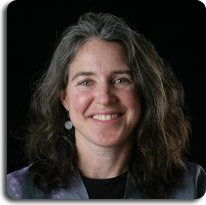 Gillian Caldwell is the former head of 1Sky, a TILE
Gillian Caldwell is the former head of 1Sky, a TILE 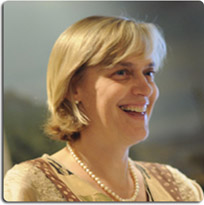 Beth Rhyne is a true microfinance expert. In her career, she’s overseen microenterprise development at
Beth Rhyne is a true microfinance expert. In her career, she’s overseen microenterprise development at 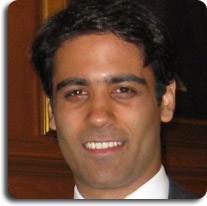 Divya Narendra is the 28 year old CEO and co-founder of SumZero, a website designed to help professional investors to share their investment ideas and network with one another. Running a business isn’t easy work, and so Divya spends his days generating new feature ideas, consulting with lawyers, forming partnerships with third parties, marketing the website, and yes, even handling the company’s bank accounts. He paused the work whirlwind for a moment to talk with TILE about starting up a start-up.
Divya Narendra is the 28 year old CEO and co-founder of SumZero, a website designed to help professional investors to share their investment ideas and network with one another. Running a business isn’t easy work, and so Divya spends his days generating new feature ideas, consulting with lawyers, forming partnerships with third parties, marketing the website, and yes, even handling the company’s bank accounts. He paused the work whirlwind for a moment to talk with TILE about starting up a start-up.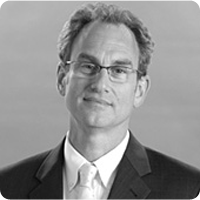 When you want the cold, hard facts about a stock or a market, you look for a person like Steven Goldman. He’s spent the last 25 years as a chief market strategist for Weeden & Co., which basically means he does the really hard math so you don’t have to. (
When you want the cold, hard facts about a stock or a market, you look for a person like Steven Goldman. He’s spent the last 25 years as a chief market strategist for Weeden & Co., which basically means he does the really hard math so you don’t have to. (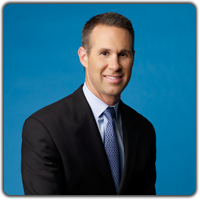 Scott Cutler is the Head of Listings at the New York Stock Exchange, which means that when a company wants to go public and get listed on the NYSE, they’ve got to go through him first. We asked him about his work and how he got there, and Scott graciously answered.
Scott Cutler is the Head of Listings at the New York Stock Exchange, which means that when a company wants to go public and get listed on the NYSE, they’ve got to go through him first. We asked him about his work and how he got there, and Scott graciously answered. On Dec. 10, 1997, 23-year Julia “Butterfly” Hill climbed into a 180-foot California Coast redwood tree. Her goal was to live in the tree for as long as it took to prevent its destruction and the destruction of the forest where it had lived for more than 1,000 years. During the two years she spent in “Luna” (as she affectionately named the tree), she attracted worldwide attention for her use of nonviolent action in defense of the forest she cared so deeply about. Julia went up the tree an unknown campaigner and came down an international symbol. Her actions, both during her time in the tree and in the years since, are an attempt to heal the rift between humans and the natural environment. TILE had a conversation with her, almost ten years after she descended from her perch in the redwood forest.
On Dec. 10, 1997, 23-year Julia “Butterfly” Hill climbed into a 180-foot California Coast redwood tree. Her goal was to live in the tree for as long as it took to prevent its destruction and the destruction of the forest where it had lived for more than 1,000 years. During the two years she spent in “Luna” (as she affectionately named the tree), she attracted worldwide attention for her use of nonviolent action in defense of the forest she cared so deeply about. Julia went up the tree an unknown campaigner and came down an international symbol. Her actions, both during her time in the tree and in the years since, are an attempt to heal the rift between humans and the natural environment. TILE had a conversation with her, almost ten years after she descended from her perch in the redwood forest.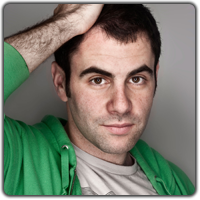 Noah Brier is the head of strategic planning for the Barbarian Group, a firm that comes up with “awesome stuff on the Internet” for all kinds of brands. In his free time he’s also a blogger (
Noah Brier is the head of strategic planning for the Barbarian Group, a firm that comes up with “awesome stuff on the Internet” for all kinds of brands. In his free time he’s also a blogger (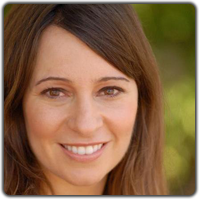 Pamela Hawley is founder and CEO of
Pamela Hawley is founder and CEO of 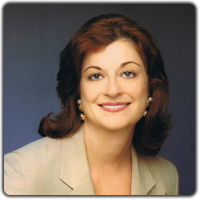 Heidi Steiger is the author of “Wealthy and Wise: Secrets About Money,” and an expert in financial management. After a long and successful career in the financial industry, she’s currently an Advisory Director at Berkshire Capital, an
Heidi Steiger is the author of “Wealthy and Wise: Secrets About Money,” and an expert in financial management. After a long and successful career in the financial industry, she’s currently an Advisory Director at Berkshire Capital, an